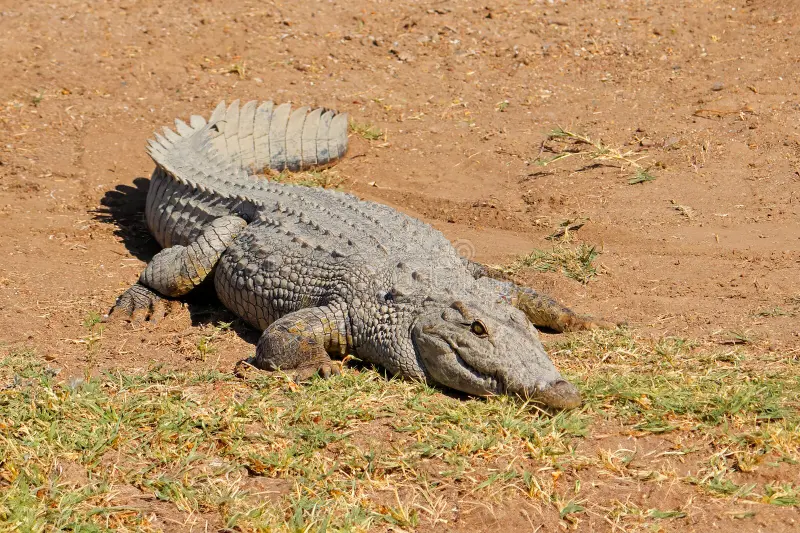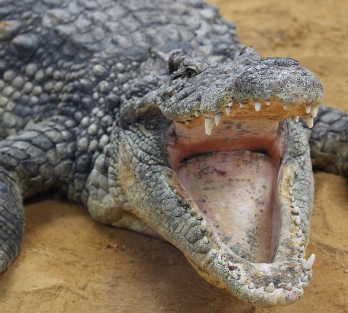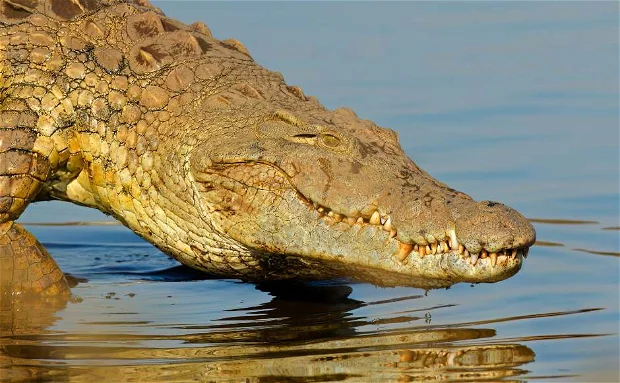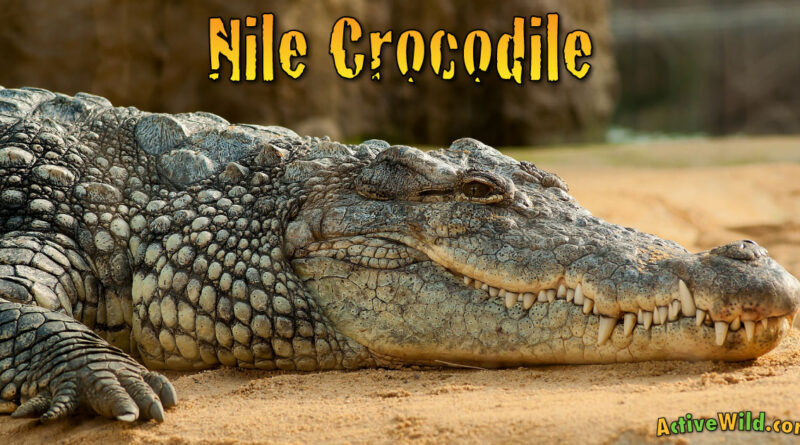Nile Crocodile Habitat Range
Nile Crocodile Habitat Range The Nile crocodile (Crocodylus niloticus) is one of Africa’s most iconic reptiles, known for its formidable size, powerful build, and apex predator status. Found across the continent’s waterways, the Nile crocodile has adapted to a wide range of aquatic environments, from vast river systems to isolated wetlands. Understanding the habitat range of this species is crucial not only for appreciating its ecological role but also for implementing effective conservation strategies. This article explores the distribution, habitat characteristics, and conservation status of the Nile crocodile, providing a detailed look at the factors influencing its habitat range.
Introduction
The Nile crocodile, often feared and respected, plays a crucial role in maintaining the health and balance of aquatic ecosystems. As a top predator, it regulates the population of prey species and contributes to the ecological stability of its habitat. The species is widespread across sub-Saharan Africa and extends into parts of North Africa, but its range and habitat use have evolved over time due to environmental changes and human influences. Analyzing the habitat range of the Nile crocodile provides insights into its ecological requirements, behaviors, and the challenges it faces in a rapidly changing world.
Geographical Distribution
Historical Distribution

Historically, the Nile crocodile’s range was far more extensive than it is today. The species once roamed much of the African continent and extended into parts of the Middle East. Early records suggest that Nile crocodiles were present in areas as far north as the Nile Delta in Egypt and as far west as the Senegal River. Ancient Egyptian art and literature frequently depicted crocodiles in the Nile, symbolizing their historical significance and widespread presence.
Current Distribution
Today, the distribution of the Nile crocodile is more fragmented, primarily due to habitat loss and human persecution. The species is found throughout sub-Saharan Africa in countries such as Ethiopia, Uganda, Kenya, Tanzania, Zambia, Zimbabwe, Botswana, and South Africa. Its presence extends westward to countries like Nigeria and eastward to Madagascar, where a distinct population exists. Major river systems like the Nile, Congo, Zambezi, and Limpopo support large crocodile populations, along with many lakes such as Lake Victoria, Lake Tanganyika, and Lake Malawi. In these habitats, Nile crocodiles inhabit both protected and unprotected areas, where their populations are influenced by varying degrees of human activity.
Habitat Characteristics
Preferred Water Bodies
Nile crocodiles primarily inhabit freshwater ecosystems, including rivers, lakes, and marshlands. They prefer environments with slow-moving water, dense vegetation along the banks, and access to deep pools or calm sections for basking. However, they are also known for their adaptability. They can tolerate brackish water and have been recorded in estuaries and coastal areas. In such regions, they often exploit the tidal flows and can remain for extended periods as long as prey availability and salinity levels remain favorable.
Climate and Environmental Conditions

The Nile crocodile thrives in tropical and subtropical climates with warm temperatures year-round. During colder months or dry seasons, they tend to be less active, conserving energy by basking on riverbanks or staying submerged to regulate their body temperature. While they prefer stable environments, Nile crocodiles are capable of enduring temporary fluctuations in water availability, such as seasonal floods and droughts.
Range Variability and Habitat Types
Riverine Systems
Riverine systems are the primary habitat for Nile crocodiles. They inhabit major African rivers like the Nile, Congo, and Zambezi, where they exploit a variety of niches, from shallow riverbeds to deeper channels. These river systems offer abundant prey such as fish, mammals, and birds, along with suitable nesting sites along sandbanks or islands.
Lakes and Wetlands
Large lakes and wetland areas, such as the Okavango Delta and Lake Chad, provide critical habitats for Nile crocodiles. In these environments, crocodiles take advantage of seasonally inundated areas and dense aquatic vegetation to hunt and hide. Wetlands are particularly important during the breeding season, as they offer secluded areas for nesting and rearing young.
Coastal and Estuarine Regions
Although less common, Nile crocodiles are sometimes found in coastal and estuarine regions, where they have adapted to tolerate higher salinity levels. This adaptability allows them to exploit estuaries and lagoons, where they can prey on fish and other marine life. Coastal populations are rare but illustrate the species’ capacity to inhabit diverse aquatic habitats.
Factors Influencing Habitat Range
Natural Factors

The availability of prey and suitable nesting sites are key determinants of the Nile crocodile’s habitat range. Crocodiles are opportunistic feeders, relying on fish, mammals, and birds, and their presence often corresponds to areas with high prey density. Seasonal floods and droughts also influence their distribution, as these events can alter water levels and force crocodiles to migrate to new areas.
Anthropogenic Factors
Human activities have significantly impacted the range of the Nile crocodile. Habitat destruction due to agriculture, urbanization, and dam construction has led to the fragmentation of their populations. Human-crocodile conflict, particularly in regions where humans and crocodiles share water resources, has also contributed to the decline of local populations. Furthermore, climate change poses a long-term threat by affecting water availability and habitat stability.
Migration Patterns and Range Expansion
Nile crocodiles are known to migrate seasonally, often in response to changes in water levels and prey availability. During the dry season, they may move into deeper pools or nearby water bodies to access stable water sources. In some cases, individuals have been observed traveling long distances over land to reach new territories, especially during droughts. These movements can lead to range expansion, where crocodiles colonize new habitats or re-establish themselves in areas from which they were previously absent.
Conservation Status and Habitat Protection
Current IUCN Status and Population Trends
The Nile crocodile is currently classified as “Least Concern” by the International Union for Conservation of Nature (IUCN), but this status does not reflect the challenges faced by certain populations. While some populations remain stable, others have declined significantly due to habitat loss and human persecution.
Protected Areas and Conservation Efforts

Many of Africa’s national parks and protected areas serve as strongholds for Nile crocodile populations. Key habitats include the Okavango Delta in Botswana, the Serengeti National Park in Tanzania, and the Nile River in Uganda. Conservation efforts focus on mitigating human-crocodile conflict, protecting critical nesting sites, and promoting sustainable management of aquatic resources.
Impact of Habitat Loss and Fragmentation
Habitat loss and fragmentation pose significant threats to the long-term survival of the Nile crocodile. As wetlands and riverine habitats are converted for agriculture or urban development, crocodiles lose access to key resources. Fragmentation also isolates populations, reducing genetic diversity and increasing vulnerability to local extinctions.
Case Studies
The Nile River, Uganda and Sudan
The Nile River supports one of the most significant Nile crocodile populations in Africa. In Uganda and Sudan, conservation programs have focused on protecting key habitats and mitigating conflict with local communities. These efforts have contributed to stable population trends along certain stretches of the river.
The Okavango Delta, Botswana

The Okavango Delta is a prime example of a protected wetland habitat that supports a thriving Nile crocodile population. Here, crocodiles play an essential role in the ecosystem, contributing to nutrient cycling and maintaining the balance of prey species. The Delta’s conservation status has allowed for comprehensive studies on crocodile behavior and habitat use, providing valuable data for broader conservation efforts.
Conclusion
The habitat range of the Nile crocodile is a reflection of its adaptability and resilience. From expansive river systems to isolated wetlands and even coastal regions, Nile crocodiles have proven capable of surviving in diverse environments. However, human activities continue to challenge their survival, leading to localized declines and fragmented populations. Effective conservation strategies must focus on protecting critical habitats, mitigating human-crocodile conflict, and ensuring sustainable management of aquatic ecosystems.
Understanding the habitat range and ecological requirements of Nile crocodiles is crucial for their long-term conservation. Continued research and monitoring, along with community-based conservation initiatives, will play a key role in ensuring that this ancient species continues to thrive in its natural habitats.
FAQs on Nile Crocodile Habitat Range
Where are Nile crocodiles typically found?
- Nile crocodiles are commonly found throughout sub-Saharan Africa, inhabiting freshwater rivers, lakes, marshlands, and wetlands. They are present in countries like Egypt, Ethiopia, Kenya, Uganda, Tanzania, and South Africa, and are also found in certain regions of West Africa and Madagascar.
Do Nile crocodiles live in saltwater environments?
- Although Nile crocodiles primarily live in freshwater, they can tolerate brackish water and are occasionally found in estuaries and coastal regions. Their presence in saltwater is less common and usually temporary.
What factors influence the habitat range of Nile crocodiles?
- The distribution of Nile crocodiles is influenced by prey availability, water quality, nesting sites, and environmental conditions like temperature and water levels. Human activities, such as habitat destruction and climate change, also play a significant role in determining their habitat range.
How far do Nile crocodiles travel?
- Nile crocodiles are known to travel considerable distances, particularly during dry seasons or periods of drought. They can move over land in search of new water bodies, sometimes covering several kilometers to reach suitable habitats.
Are Nile crocodiles protected in their natural habitats?
- Yes, Nile crocodiles are protected in several national parks and conservation areas across Africa. However, their protection status varies by region, and in some areas, they face threats from habitat loss, human conflict, and illegal hunting. Conservation efforts aim to ensure their populations remain stable in key habitats.
